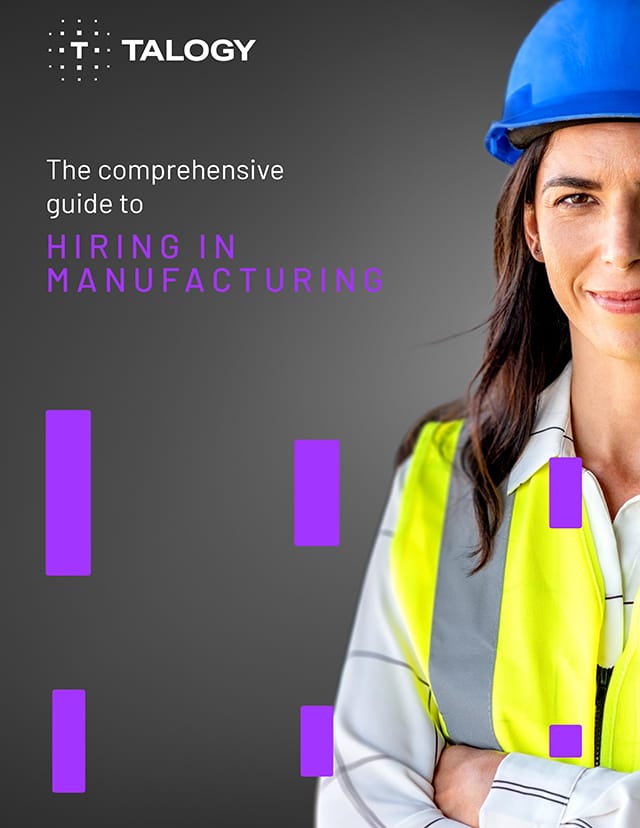Written by Jaclyn Menendez, Former Project Consultant, Talogy
Not to brag, but I’ve been to my fair share of manufacturing plants in this country. If you don’t work in manufacturing, you may think that all plants look and act alike. (If you do work in manufacturing, then you know how very wrong that is.)
But there is one factor that tends to unite manufacturing companies nowadays, regardless of the product being produced: They are all feeling the skills gap. This predicament is the result of a perfect storm: Experienced workers are retiring, the manufacturing industry is booming and in need of more workers, and eligible young applicants are largely unfamiliar with the world of manufacturing in general.
How to address the manufacturing skills gap
Though this pain is felt across the manufacturing industry, some organisations are more prepared to weather the storm than others. In my observations and conversations with some of our most successful clients, I’ve noticed a few trends that set these organisations apart when it comes to hiring manufacturing employees and addressing those skills gap struggles.
Here are some of the investments our top manufacturing clients have taken to close the manufacturing skills gap in their workforce:
- Partner with local community colleges or trade schools.
The skills gap exists when there is no pipeline of candidates who are informed, motivated, and trained in the basic requirements for successful performance in manufacturing roles. One of the most direct and effective ways to combat this and enhance your hiring process is to target your applicant search to students who have already exhibited an interest and basic aptitude for working in manufacturing. Organisations that embrace this mindset will go beyond job fairs and become true partners with local educational programs.
One example is to have monthly or quarterly tour groups set up for any students interested in learning about the organisation. Internships, job shadowing, and targeted advertisements about your company’s benefits can also attract young applicants. Or, if you use assessments in your selection process, offer testing opportunities at local school libraries. - Assess aptitude, not knowledge.
Even when a partnership with local communities is not feasible, your candidate pool can still possess great employees. Applicants with little or no manufacturing experience will likely need more time to learn the role, though, and require more upfront information about the job itself.
When it comes to addressing the manufacturing skills gap, successful organisations know that ability to learn is one of the top qualities that leads to high job performance. I dare say that it is almost as important as already having the skills for the job. If your selection system includes knowledge-based questions for a role that is entry-level, or a role in which this knowledge can quickly be learned, then you’re likely screening out candidates who could be successful.
Instead, assess a candidate’s ability to learn the job along with their personal preferences for the job type. These two factors will help increase your rate of hiring high potential employees even when their current skillset is lacking. - Create in-house programs and certifications.
Once you’ve found the right employees to bring on board, you’ll want to keep developing their skillset regardless of their background. Some of the most successful companies have their own voluntary trainings and programmes available for anyone who wants to learn specialised skills. Investing in new employee development is beneficial for everyone involved — employees gain a sense of pride in themselves and commitment to the organisation, and the company will have higher calibre employees who can mentor the next wave of new hires.
While there’s no foolproof way to solve the skills gap problem, it’s no coincidence that many top-performing manufacturing organisations are following similar actions. Taking specific steps to proactively reduce the skills gap in manufacturing is your best way to stay afloat and become an organisation that withstands the test of time.



